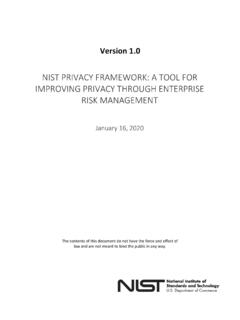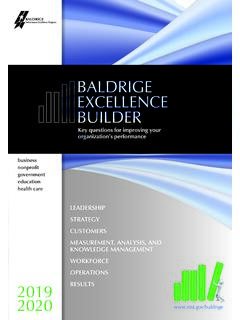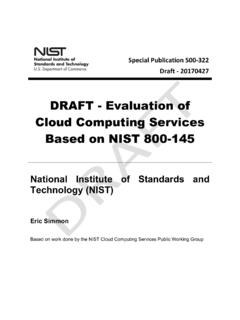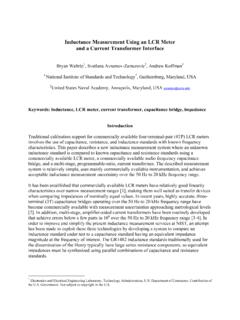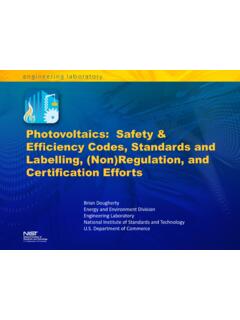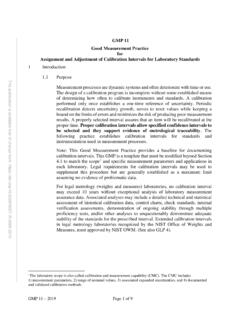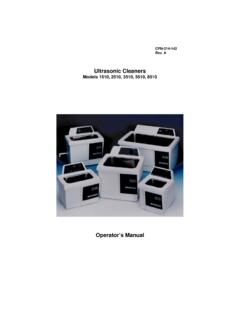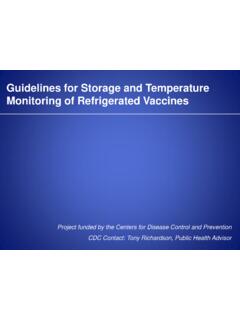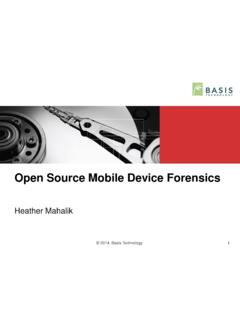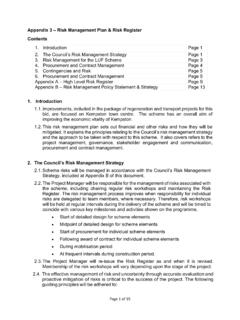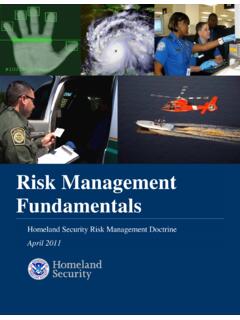Transcription of Critical Infrastructure Cybersecurity - NIST
1 Framework for Improving Critical Infrastructure Cybersecurity June 2016 About NIST NIST s mission is to develop and promote measurement, standards, and technology to enhance productivity, facilitate trade, and improve the quality of life. 3,000 employees 2,700 guest researchers 1,300 field staff in partner organizations Two main locations: Gaithersburg, MD and Boulder, CO NIST Priority Research Areas National Institute of Standards and Technology (NIST)
2 Advanced Manufacturing IT and Cybersecurity Healthcare Forensic Science Disaster Resilience Cyber-physical Systems Advanced Communications Improving Critical Infrastructure Cybersecurity It is the policy of the United States to enhance the security and resilience of the Nation s Critical Infrastructure and to maintain a cyber environment that encourages efficiency, innovation, and economic prosperity while promoting safety, security, business confidentiality, privacy, and civil liberties President Barack Obama Executive Order 13636, 12 February 2013 3 Based on the Executive Order, the Cybersecurity Framework Include a set of standards, methodologies, procedures, and processes that align policy, business, and technological approaches to address cyber risks Provide a prioritized, flexible, repeatable, performance-based, and cost-effective approach, including information security measures and controls, to help owners and operators of Critical Infrastructure identify, assess.
3 And manage cyber risk Identify areas for improvement to be addressed through future collaboration with particular sectors and standards-developing organizations Be consistent with voluntary international standards 4 5 Development of the Framework Engage the Framework Stakeholders Collect, Categorize, and Post RFI Responses Analyze RFI Responses Identify Framework Elements Prepare and Publish Framework EO 13636 Issued February 12, 2013 NIST Issues RFI February 26, 2013 1st Framework Workshop April 03, 2013 Completed April 08, 2013 Identify Common Practices/Themes May 15, 2013 2nd Framework Workshop at CMU May 2013 Draft Outline of Preliminary Framework June 2013 3rd Workshop at UCSD July 2013 4th Workshop at UT Dallas Sept 2013 5th Workshop at NC State Nov 2013 Published Framework Feb 2014 Ongoing Engagement.
4 Open public comment and review encouraged and promoted throughout the and to this day The Cybersecurity Framework Is for 6 Of any size, in any sector in (and outside of) the Critical Infrastructure That already have a mature cyber risk management and Cybersecurity program That don t yet have a cyber risk management or Cybersecurity program With a mission of helping keep up-to-date on managing risk and facing business or societal threats Cybersecurity Framework Components Describes how Cybersecurity risk is managed by an organization and degree the risk management practices exhibit key characteristics Aligns industry standards and best practices to the Framework Core in a particular implementation
5 Scenario Supports prioritization and measurement while factoring in business needs Cybersecurity activities and informative references, organized around particular outcomes Enables communication of cyber risk across an organization Framework Core Framework Implementation Tiers Framework Profile 7 Key Properties of Cyber Risk management 8 Risk management Process Integrated Risk management Program External Par6cipa6on Implementation Tiers 9 1 2 3 4 Par6al Risk Informed Repeatable Adap6ve Risk management Process The func)
6 Onality and repeatability of Cybersecurity risk management Integrated Risk management Program The extent to which Cybersecurity is considered in broader risk management decisions External Par6cipa6on The degree to which the organiza)on benefits my sharing or receiving informa)on from outside par)es 9 Intel Adaptation of Implementation Tiers 10 1 2 3 4 Par6al Risk Informed Repeatable Adap6ve People Whether people have assigned roles, regular training, take ini)a)ve by becoming champions, etc.
7 Process NIST Risk management Process + NIST Integrated Risk management Program Technology Whether tools are implemented, maintained, evolved, provide effec)veness metrics, etc. Ecosystem NIST External Par9cipa9on + Whether the organiza)on understands its role in the ecosystem, including external dependencies with partners 10 Taxonomy Value Proposi)on Plant classification is the placing of known plants into groups or categories to show some relationship. Scientific classification follows a system of rules that standardizes the results, and groups successive categories into a hierarchy.
8 For example, the family to which lilies belong is classified as: Kingdom: Plantae Phylum: Magnoliophyta Class: Liliopsida Order: Liliales Family: Liliaceae Genus: .. Species: .. Value Proposition Accurate communication Quickly categorize known Logically name unknown Inherent properties understood based on name Core Cybersecurity Framework Component Func6on Category ID What processes and assets need protec6on? Iden6fy Asset management Business Environment Governance Risk Assessment Risk management Strategy What safeguards are available?
9 Protect Access Control Awareness and Training Data Security Informa)on Protec)on Processes & Procedures Maintenance Protec)ve Technology What techniques can iden6fy incidents? Detect Anomalies and Events Security Con)nuous Monitoring Detec)on Processes What techniques can contain impacts of incidents? Respond Response Planning Communica)ons Analysis Mi)ga)on Improvements What techniques can restore capabili6es?
10 Recover Recovery Planning Improvements Communica)ons 12 Core Cybersecurity Framework Component 13 Func6on Category ID Iden6fy Asset management Business Environment Governance Risk Assessment Risk management Strategy Protect Access Control Awareness and Training Data Security Informa)on Protec)on Processes & Procedures Maintenance Protec)ve Technology Detect Anomalies and Events Security Con)nuous Monitoring Detec)on Processes Respond Response Planning Communica)ons Analysis Mi)ga)on Improvements Recover Recovery Planning Improvements Communica)ons Subcategory Informative References 1: The organiza)on s role in the supply chain is iden)fied and communicated COBIT 5 , , , , ISO/IEC 27001:2013 , , NIST SP 800- 53 Rev.
